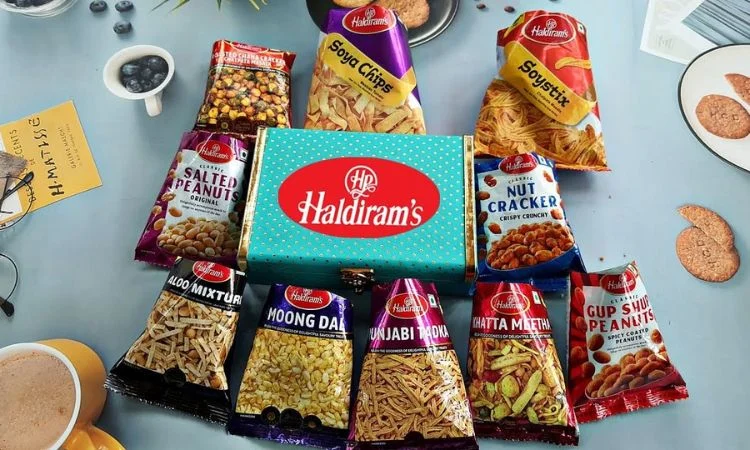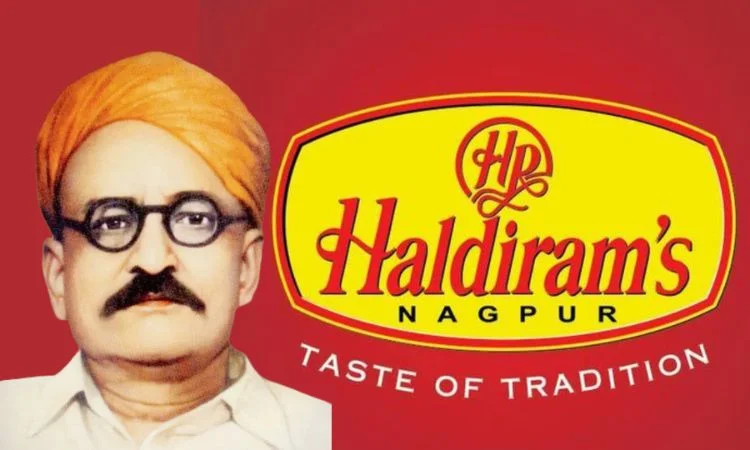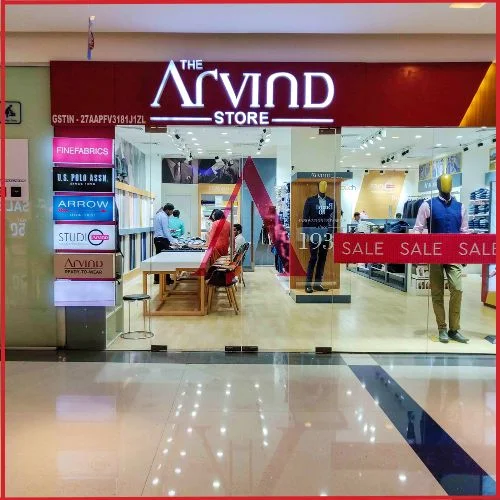India, a multicultural country that is rich in traditions, stunning cuisines and is always growing, has never ceased to be a place a person of gastronomic taste would enjoy. Among these glimmers of great culinary achievement, only the brand of Haldiram’s stands out to be the monopoly.

Source : Medium
Haldiram is one of the largest Indian companies in the field of sweet manufacturing and restaurant services and it is running the largest number of restaurants in India and other foreign countries. Eyes is operating in several plants, operating at varying locations, namely, Nagpur, Delhi, Gurgaon, Hooghly, Rudrapur, and Noida. Noida is the place of corporate office location and that of the manufacturing units are also situated there.
The chain of stores all over the county by Haldiram’s form a loyal clientele and it is supported well by the chain of restaurants located strategically in the cities like Pune, Nagpur, Raipur, Kolkata, Noida, and Delhi. By opening outlets in high-traffic areas and a prime location, the company is testifying by their very presence that they are committed to serving authentic Indian taste and those with refined palates.
Company Highlights
| Trade Name | Haldiram’s |
| Company Type | Private |
| Industry | Food |
| Founded | 1937; 87 years ago |
| Bikaner, Rajasthan, India | |
| Founder | Ganga Bishan Agarwal (Haldiram Ji) |
| Headquarters | Noida, Uttar Pradesh, India |
| Products | Snacks, sweets, beverages, frozen foods, potato chips |
| Revenue | ₹8,870 crore (US$1.1 billion) (2022) |
| Website | www.haldirams.com |
Haldiram’s: A legacy of taste consisting the years 1937 till now
Haldiram’s, which formally had its start-up in 1937 by Ganga Bishan Agarwal (known as Haldiram Ji to his home), initially began with retail confectionery and namkeen shops in Bikaner, Rajasthan. To carry out this end, the establishment of the first manufacturing factory in Kolkata( the name of the city before 1911) was introduced as an effort. Later 1970 Jaipur saw the starting of a manufacturing setup and yet another one in New Delhi the capital of India, during early 1990s.
In 2003, Haldiram’ strategically going for the R and D of convenience food segment started in the consumer market. Thanks to the creation of an image as a trust-worthy brand, the company was reported as the 55th most trusted brand in India by 2014 by the Brand Trust Report, a national research conducted by the Trust Research Advisory.
After gaining phenomenal growth in 2017 for its snacks, the country’s largest snack company was, in fact, Haldiram’s which managed to topple snack makers both domestic and international ones to achieve this title. Today, Haldiram’s products are being sold to people in more than 80 countries in the world, something that shows its international reach.
However, in 2006, Haldiram‘s owner, Prabhu Shankar Agarwal, faced legal ramifications after being found guilty of attempting to harm a Tea Seller.
In January 2024, Haldiram’s is talking about buying most of Prataap Snacks for $350 million. They want to become stronger in the potato chip market by getting at least 51% of Prataap Snacks and paying a higher price if needed.
Haldiram’s: Products

Source: Haldiram
| Product Category | Highlighted Products |
| Traditional Namkeens | Bikaneri Bhujia |
| Contemporary Western Snacks | Renowned Potato Chips |
| Iconic Indian Sweets | Delectable Gulab Jamun |
| Delectable Cookies | |
| Refreshing Sherbets | |
| Flavorful Pickles | |
| Ready-to-Eat Food Items | Culinary Innovations |
The Haldiram’s product list comprises its 410 tastefully crafted products consisting of all traditional Indian artisan namkeens, modern savory snacks, iconic desserts, divine cookies, refreshing sherbets, and unique desi pickles. It is valued for its quality and the fact that it seizes to generate any doubt that it is not the authentic item. This makes it to be prevalent for favorable ratings of its signature items such as the delicious gulab jamun, flavorful bhujia and papadum.
Along with the large range of flavors available, the company offers a variety of ready to eat food items as well, which is an affirmation of their dedication towards food science. By the 1990s, Haldiram’s ventured into applying advanced technology using equipment imported from America, the very same country that pioneered innovation for the manufacturing of potato based snacks.
Instead of confining its products to a single retail channel such as bakeries or confectionery shops, Haldiram aims to broaden its product portfolio across different retail channels, including reputable online shopping websites. The company’s presence in the United States market was prominent for its well-known products, such as its uttered potato chips up to August 2003.
While it began with specialty foods, its product portfolio has been expanded, and now one can find these products at some Indian supermarkets in the US, catering for the sophisticated palates of the Indian diaspora. It reveals the diplomacy brand’s love by the global community and, thus, widespread taste in consuming goods.
The Adventurous of a company and its strategies for the business
Haldiram’s, a prominent name in the food industry, owes its resounding success to the visionary leadership and strategic acumen of three key figures: The first name is Ganga Bishan Agarwal, and others are Shiv Kishan Agarwal and Manohar Lal Agarwal. With their solid resolution and the innovative techniques, the brand that started out ventured transition into a preferred choice for sensitive consumers.
Ganga Bishan Agarwal’s Transformative Influence on Haldiram’s Destiny
Ganga Bishan Agarwal – Founder of Haldiram’s

Source: Financial Express
Ganga Bishan Agarwal, fondly known as Haldiram Ji, laid the foundation of Haldiram’s in 1941, hailing from a distinguished Marwari family in Bikaner, Rajasthan.
The roots of Haldiram’s inception trace back to 1919 when Ganga Bishan Agarwal, at the tender age of 11, began working at his father’s bhujia shop. Despite engaging in menial tasks, his passion for perfecting the art of bhujia-making fueled his ambition. At a time when bhujia dominated the market, Ganga Bishan Agarwal aimed to create a unique and superior product.
Driven by an unwavering commitment to excellence, he experimented with different ingredients until he succeeded in crafting a distinct type of bhujia.
Three pivotal changes marked the evolution of Haldiram’s business trajectory:
Innovative Ingredient Selection:
Ganga Bishan Agarwal shifted from using gram flour to moth beans,
elevating the taste and crispiness of the bhujia.
Premium Pricing Strategy:
While competitors priced their bhujia at 2 paise/kg, Haldiram strategically set his rate at 5 paise/kg, positioning his product as a premium offering.
Strategic Branding:
Renaming the bhujia as Dongar Sev, inspired by Bikaner’s king, added a regal touch, creating a perception of exclusivity and establishing the product as a premium brand.
The culmination of these strategic decisions propelled Haldiram’s Dongar Sev to unprecedented popularity, soaring in sales and laying the foundation for the brand’s enduring success. This chapter marks the inception of Haldiram’s, a brand that has evolved into a household name under Ganga Bishan Agarwal’s visionary leadership. Yet, this was merely the beginning of the remarkable journey.
Mr. Shiv Kishan Agarwal: The Architect of the Company’s Second Growth Phase
Crucial in Haldiram’s path to success during the late-1960s was the visionary leadership of Shiv Kishan Agarwal, who belonged to the Haldiram Bhavans post. In order to have a better connection, the Agarwal family of Bikaner, Kolkata, and Nagpur face different problems and remarkable successes along the way.
Despite Thakur bhujia business becoming successful in Kolkata and Bikaner, the growth in Nagpur was not the same. Especially in the 1960s when there was almost nil demand for bhujia right from Nagpur to the whole of Maharashtra. In spite of the difficulties in the local language and the unfamiliar customer preferences, he decided to continue and go further into discovering the Maharashtrian culinary tastes.
After the launch of rigorous market research with the help of the entire Nagpur market, the area provides two interactive locations. One aspect of the target market is the people of Maharashtra did not have the knowledge of different types of snacks which could be used to diversify and introduce new products. Notably, this gap of a narrow choice in the sweets market segment of only having a few options made itself well-known.
Kaju Katli has become the trademark item of Mr. Agarwal saw a niche and penetrated his favorite item into the market. But utilizing a strategic methodology, he distributed free customary tablets, and voila, Kaju Katli began to be noticed in Nagpur in less than 3 days.
The rememberful taste vibe that accompanied the consumers, saved the day as sales were taking a new rise. Expansively, he featured the unique sweets and tasty items from both Bikaner and Calcutta, leading to a stunning 400% boom in sales in the ensuing three years.
Mr. Agarwal’s business sense did not fail him when he identified that the trend in the local community was inclined towards South Indian snacks such as Idli and Dosa, which made him launch a South Indian fast-food company to lure more customers.
Thus, it was a blazing success that encouraged us to increase our menu with samosa, kachori, and chole bhatue to also include the Indian foods to the list of our offerings.
Manohar Lal Agarwal’s Strategies Made the Brand One of a Kind
As the sole master of a top-notch company Haldiram’s, the shining star Manohar Lal Agarwal has rooted the successful growth of the brand. In 1973, when it was handed to them, Haldi primavera had only three outlets in India. And all these outlets were in Kolkata, Nagpur and Bikaner only. The story in the context of Agarwal became even more exciting when in addition to his original store in Delhi, he also established a shop in Chandni Chowk.
Agarwal implemented two pivotal strategies that would prove transformative for the brand’s trajectory:
Elevating Product Packaging Standards
While an example of the prevalent practices in the 1990s could be that the snack packs were not packaged at all, Manohar Lal Agarwal took a deviation in doing things by bringing about a paradigm shift to an era of better packaging.
Haldiram’s, leading him to form the first Indian company that was concerned with the presentation and packaging of its snacks. Agarwal was a real innovator during this era of packet manufacturing making extensive use of the advancements including the adoption of a zip pouch, standee pouch packaging, and a four-layer structure, flexible packaging.
This tactical move not only elevated the brand visibility but it also bolstered the consumers confidence in the product thus positioning Haldiram’s sweets and snacks as a notch higher not only in service but also quality. The brand is the business, so it became the unique and the best one within the market.
Strategic Expansion Across Cities:
On the managerial side of things, the second meticulous plan of Manohar Lal Agarwal was to go for both targeted major metropolises as well as smaller cities at a later stage. The brand’s introduction in various parts of India from its epicenter in Haldiram’s place gave birth to popularity enhancements which gave people awareness about the brand.
A strategic approach led to a surge in sales; this paved the way for a much broader expansion beyond our initial market boundaries. Haldiram’s has left the comfort zone of being a regional entity and has turned out to be a national gastronomic sensation.
Manohar Lal Agarwal`s intuitive commercial acumen and strategic foresight have indeed appeared as the two most decisive factors in crafting the Haldiram’s as a trendsetter and surpassing the brand amidst the cutthroat commercial arena.
Conclusion
In conclusion, Haldiram’s stands as a testament to India’s rich culinary landscape and entrepreneurial spirit, evolving from a modest start in 1937 to becoming a global culinary giant. The brand’s success can be attributed to the visionary leadership of three key figures—Ganga Bishan Agarwal, Shiv Kishan Agarwal, and Manohar Lal Agarwal— who played pivotal roles in shaping Haldiram’s into the gastronomic powerhouse it is today.















